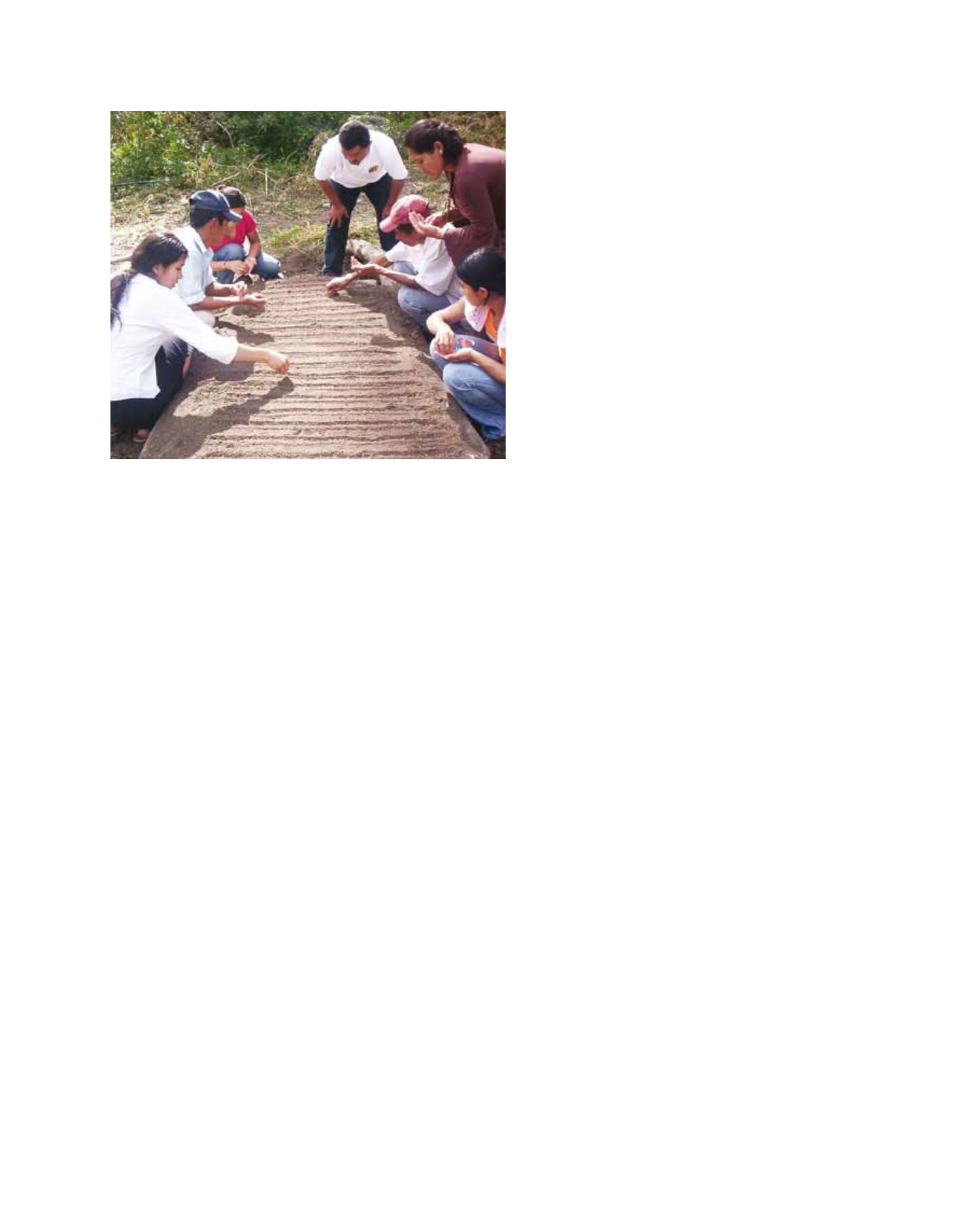

[
] 58
A
griculture
the Central American Presidents have stressed the need
to manage climate risk as one of the priorities for all
of these countries, as expressed in the Extraordinary
Summit of Heads of State and Government of the SICA
Member Countries in October 2011; 37th Ordinary
Meeting of Heads of State and Government of the SICA
Member Countries in December 2011.
Based on such framework, SICA’s regional tech-
nical secretariats of fisheries, agriculture, risk
management, health, water and sanitation and food
security participate in the process of interpreting the
results of the CA-CO for FNS, placing special empha-
sis on the areas seasonally or chronically affected by
food production or access problems. After 13 years,
the CA-CO reaches hundreds of users directly and
keeps increasing its seasonal demand, as all those
users employ it as a reference resource every three
months for decision-making on diverse activities to
assure food security.
FAPC
Starting in 2006, CRRH and the Regional Program for
Food and Nutrition Security (PREFNSCA), funded
by the European Union, promoted the FAPC for the
purpose of reinterpreting climate outlooks in terms
of climate hazards relevant to the sectors involved
in FNS, and thus became the first users of the FCAC
output. In the FAPC, experts from all those sectors
work with FCAC experts, analysing and taking
ownership of the forecast in order to jointly generate
climate risk scenarios specific to the sectors. Based on
these scenarios, they identify measures for managing
the risk.
The output of the FAPC, a quarterly seasonal outlook,
is disseminated using SICA mechanisms through its
sectoral regional secretariats. These technical secre-
tariats use their networks of government organizations
and ministries, secretariats and cabinets responsible
for food security management, each under their own
mandate, to spread the results of the FCAC and FAPC
for technical and political decision-making regarding
food insecurity.
The PRESANCA II Programme, working with highly
vulnerable communities of Central America, provides
support in several ways, including technical advice. All
PRESANCA activities are intended to solve pre-existing
food insecurity as well as to prevent it. The FAPC serves
as a starting point for discussion at national level, in the
fora currently promoted by PRESISAN-PRESANCA II,
where emphasis is placed on actions intended to avoid
losses on harvesting and basic goods, so the vulnerable
communities can reduce the impact of climate variabil-
ity on their livelihoods.
These fora prioritize seasonal analysis of the implica-
tions and conditions associated with climate variability
and its impacts on the various sectors and on FNS,
depending on the season of the year, with the partici-
pation of private officials and stakeholders who give a
new context to the information.
On the other hand, the component for reaching the users of the
Central America Climate Outlook (CA-CO) has been based on a
clear and concrete report structure, supported by broad electronic
dissemination and the use of graphic resources to share the infor-
mation, including a probability map according to precipitation
scenarios – higher than normal, normal or lower than normal – and
a table of the regions in all countries, according to those scenarios.
This has enabled it to focus the attention of users, whose number
and interest have increased with each new report delivered and
shared with the community.
Since 2000, the FCAC has issued 38 seasonal outlooks, quite
an accomplishment by the Central America Regional Committee
on Hydraulic Resources (CRRH) member countries, through their
NMHSs which contribute specialized human resources, data analy-
sis work and development of services and products to benefit the
region. All of this is facilitated by the logistics management and
coordination of the CRRH Executive Secretariat and supported by
the Central American Integration System (SICA). FCAC technical
meetings have received funding from various donors including the
European Union, the Government of Taiwan, the Government of
Mexico, the Fiduciary Fund of Spain in the WMO and the National
Oceanic and Atmospheric Administration, among others.
Supporting the FCAC and FAPC
The ‘Strategic Framework to face the situation of food and nutrition
insecurity associated to conditions of drought and climate change’
approved by the Central American Presidents in December 2002,
placed the mandate to support actions on food security, including the
management of climate risk by all the regional institutions involved.
This strategy adopted the CA-CO as its technical reference for miti-
gating and preventing the impacts of climate variability and change.
It also recognizes the CA-CO as a dependable source of informa-
tion for the governments in the region regarding decision-making
related to reducing vulnerability to climate. In subsequent decisions,
Beneficiaries of the Presanca programme at San Jose Cusmapa preparing a
seedbed guided by facilitators; climate risk scenarios are used to manage
climate risk in the communities
Image: PRESANCA II-SICA
















